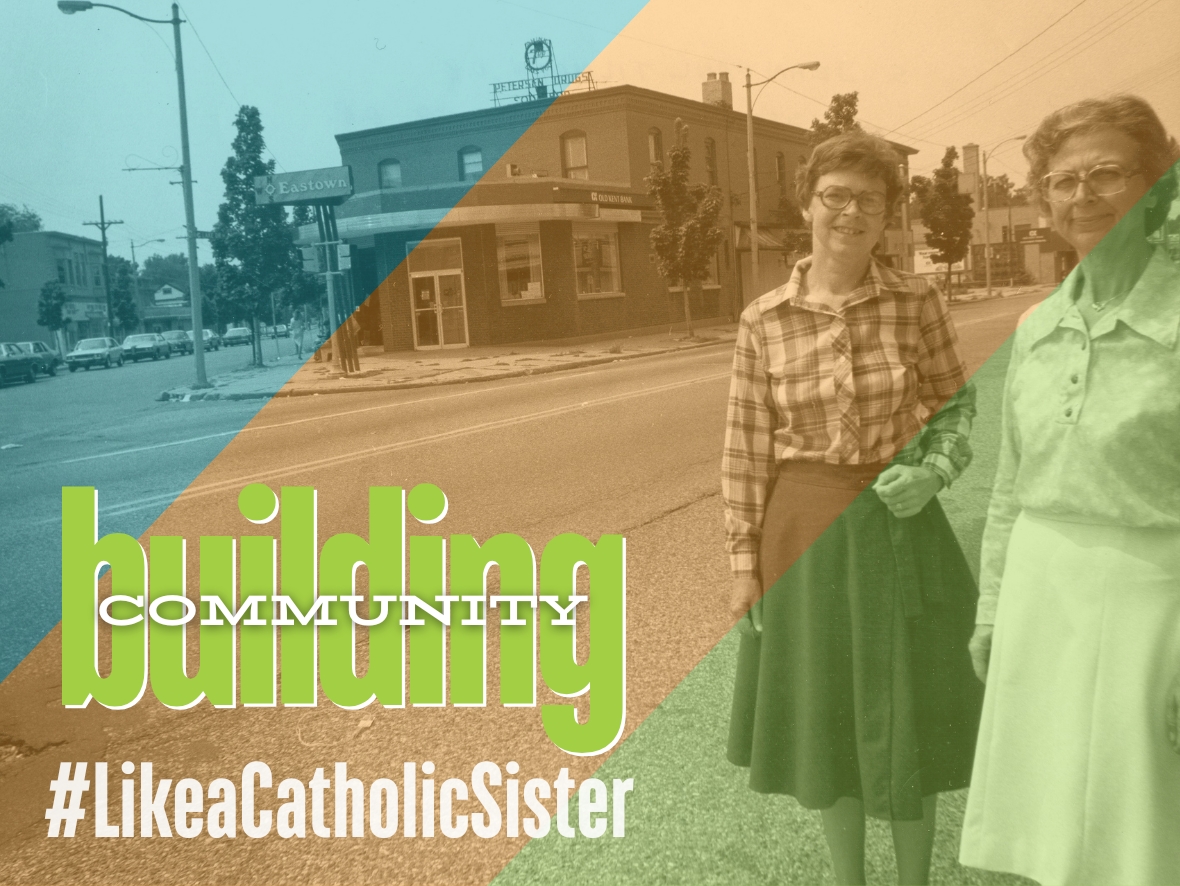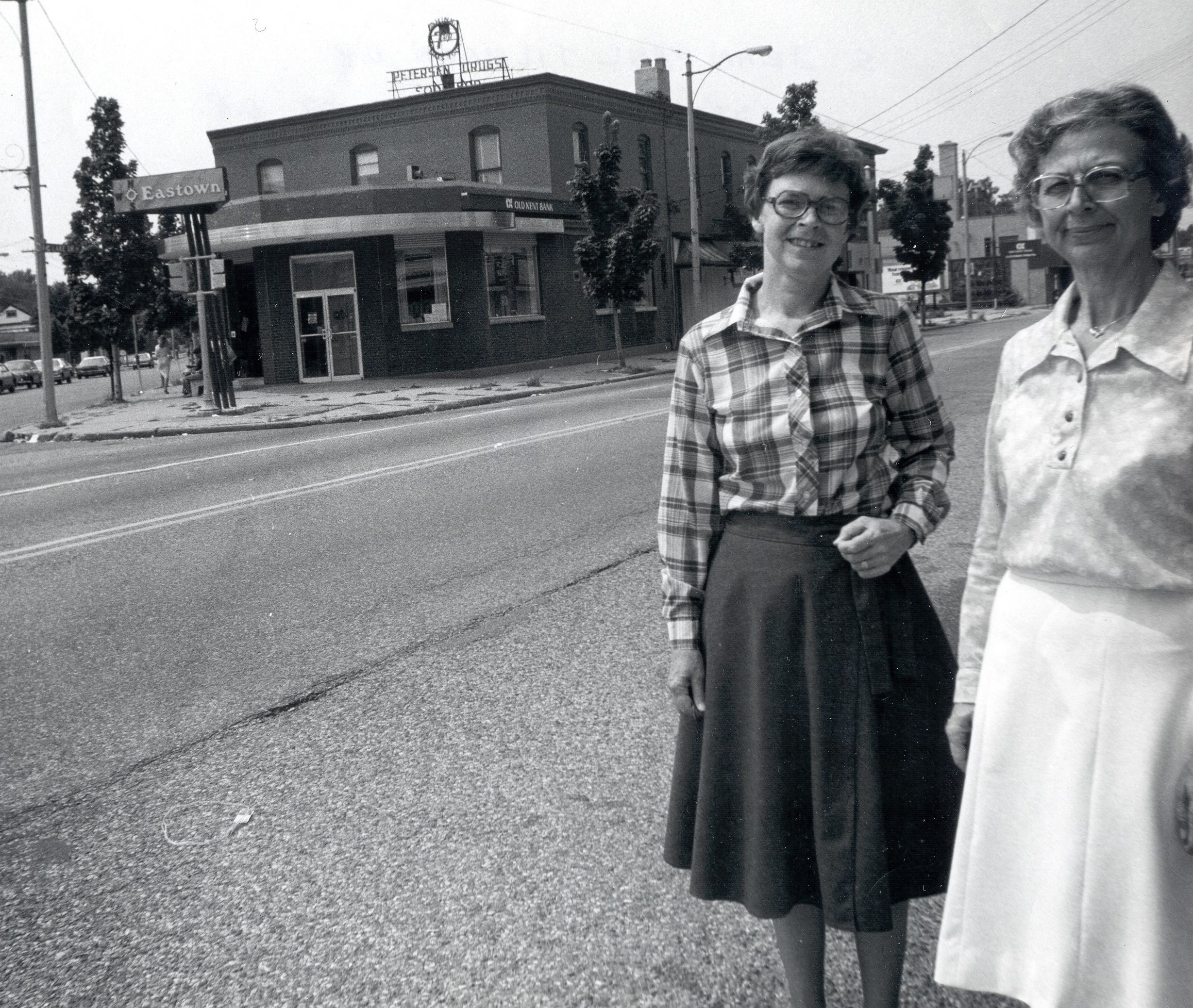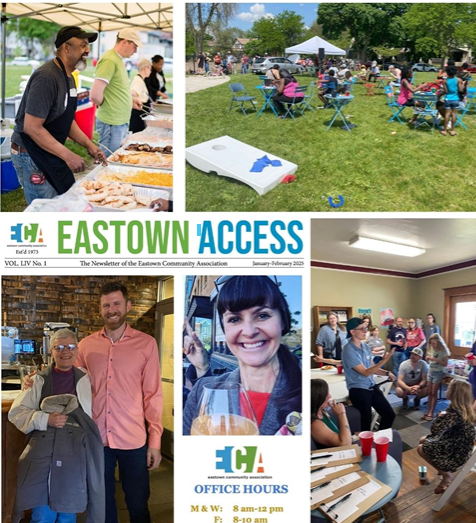
Leader and community-builders Sisters Aquinas Weber and Jean Paul Tilmann made an indelible mark on Grand Rapids, Michigan. Together with Aquinas College leaders, they challenged attitudes and norms that nearly destroyed the Eastown Neighborhood in the 1980s. Through community-building efforts, they changed the conversation from fear and distress to hope and prosperity.
The once peaceful and prosperous neighborhood around Aquinas College, known as Eastown, went through a major change. Crime was on the rise; more and more single-family homes had become rental properties owned by slum landlords. Wilcox Park, a green space adjacent to the campus, was becoming a dangerous place. Empty store fronts pocked the business district and people were afraid to be out in Eastown at night.
The Aquinas Community was threatened by these changes and Dr. Hruby knew that the future of the college would be at risk if nothing was done. At his initiative, faculty and staff of the College became involved in reversing these changes. Among them were anthropologist Linda Easley; urban geographer, Thomas Edison; and community organizer, Michael Williams. They undertook a study of the neighborhood together with Aquinas students, Grand Rapids urban planners, Grand Rapids Board of Education, and the Grand Rapids Housing Commission — concluding that without the involvement of the College in the neighborhood, there would be little hope for change and revitalization.
Sisters Aquinas Weber, member of the Eastown Board, and Jean Paul Tilmann of the Geography Department, played a significant role. Sister Aquinas recalls visiting every merchant to discuss the situation that had led a once thriving area to become marred by boarded-up buildings with poor lighting at night, making it a seed-bed for crime. A local merchant, Mr. Jim Geib of Hammer and Cortenhof Hardware, joined her and Sister Jean Paul in talking to then Mayor Lyman Parks and the Grand Rapids City Commission about the situation, pointing out that some of those boarded up and empty buildings belonged to the city itself. The group, including the Sisters, took them on a bus tour of the area, showing them the problems first hand and pointing out a lack of police presence which exacerbated the difficulties.

Sister Aquinas Weber and Sister Jean Paul Tilmann visited merchants and residents to build community-mindedness; and worked with city leaders on crime prevention and small business development. Today, Eastown Neighborhood thrives because people care, invest, and serve one another.
Police patrols increased; the Sisters joined in organizing the first Eastown Street Fair; a food co-op was established, and local leaders emerged to begin the first neighborhood association in Grand Rapids.
In light of this, merchants and members of the neighborhood joined leaders of the college community in 1973 to develop the Eastown Neighborhood Association. A year later the W.K. Kellogg Foundation provided a grant of $129,836 over a three-year period to support three goals: College-Community Liaison; Community Development through Organization; and Institutional Development at Aquinas. Sister Aquinas Weber was named administrator of the grant. Urban Studies became part of the Aquinas curriculum and faculty worked with association members to revitalize the neighborhood. With Sister James Rau as editor, Linda Easley, Thomas Edison and Michael Williams wrote the book, “Eastown! A Report on How Aquinas College Helped Its Local Community Reverse Neighborhood Transition and Deterioration”. With the expiration of the grant period, the College moved back from its leadership role and the merchants continued their joint work in the Eastown Association. Today, the area continues to thrive.
Visit Today: Eastown Neighborhood and Eastown Community Association
The mission of the Eastown Community Associate “is to foster a safe, diverse, and walkable Eastown neighborhood by creating opportunities for neighbors and friends to engage and connect.
Visit the calendar of events to see what’s happening in Eastown to support economic development and community, and welcome diversity, equity, inclusion, and more!
Get involved in your community, today!

“It takes a collaborative effort to keep a community safe and vibrant. The Eastown Community Association is devoted to fostering a safe, diverse, and walkable Eastown neighborhood by creating opportunities for neighbors and friends to engage and connect.” (About Eastown)
Sources:
The above article was originally published in “Tapestry in Time, The Story of the Dominican Sisters~Grand Rapids 1966-2012”, pp 191-194
[1] S. Aquinas Weber, Oral History May 14, 2012, Marywood Archives.


